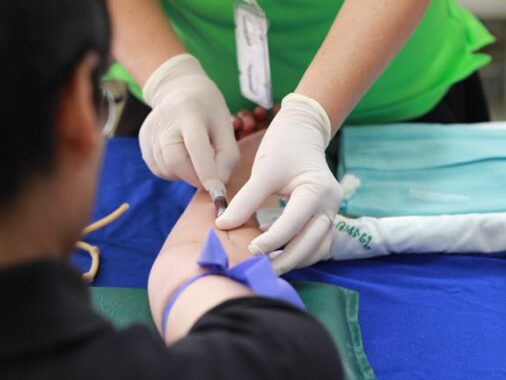In recent years, the field of dermatology and aesthetics has witnessed remarkable advancements in technology and treatments. One of the most exciting developments is the introduction of 4D laser technology. This innovative approach is revolutionising the way dermatologists and aesthetic professionals address a wide range of skin concerns. In this article, we will explore the power of 4D laser technology, its applications, and its impact on the field of dermatology and aesthetics.
I. Understanding 4D Laser Technology:
Before delving into its applications, let’s grasp what 4D laser technology entails. Unlike traditional lasers, 4D lasers combine multiple laser wavelengths, modalities, and proprietary technology to create a comprehensive and dynamic approach to skin rejuvenation and treatment. The “4D” in the name represents the four dimensions that this technology addresses:
Tightening: 4D lasers stimulate collagen production, improving skin tightness and elasticity.
Toning: They address skin tone irregularities, such as pigmentation and redness, resulting in a more even complexion.
Texture: 4D lasers improve skin texture, reducing fine lines, wrinkles, and scarring.
Lifting: These lasers offer a non-surgical facelift effect, promoting a more youthful appearance.
II. Applications of 4D Laser Technology:
The versatility of 4D laser technology makes it a powerful tool in the hands of dermatologists and aesthetic professionals. It can be applied to address a wide range of skin concerns, including:
1. Skin Rejuvenation:
4D lasers are highly effective in reversing the signs of aging. By stimulating collagen production and promoting skin tightening, they reduce fine lines and wrinkles. This makes them an excellent choice for individuals looking to rejuvenate their appearance without invasive surgery.
2. Scar Reduction:
Whether it’s acne scars, surgical scars, or scars from injuries, 4D laser technology can significantly improve their appearance. By targeting scar tissue and promoting the growth of healthy skin cells, these lasers help scars become less noticeable.
3. Pigmentation Issues:
4D lasers are particularly effective at addressing pigmentation problems, such as sunspots, age spots, and uneven skin tone. They work by breaking down melanin, which causes these dark spots, and encouraging the growth of new, even-toned skin.
4. Redness and Rosacea:
For individuals dealing with persistent redness or rosacea, 4D laser technology can reduce the appearance of blood vessels and redness on the skin’s surface. This results in a more even and less flushed complexion.
5. Skin Laxity:
As skin loses elasticity with age, it can lead to sagging and a less defined facial contour. 4D lasers offer a non-invasive solution by promoting collagen production, which in turn tightens and lifts the skin.
III. Advantages of 4D Laser Technology:
The adoption of 4D laser treatment in dermatology and aesthetics comes with several notable advantages:
- Non-Invasive: One of the key benefits of 4D lasers is that they are non-invasive. This means that patients can achieve significant improvements in their skin’s appearance without the need for surgical procedures and the associated downtime and risks.
- Minimal Discomfort: The procedure is generally well-tolerated by patients. Most individuals report only mild discomfort during treatment, and numbing agents can be used to minimise any pain.
- Minimal Downtime: Unlike surgical interventions, 4D laser treatments typically involve minimal downtime. Patients can often resume their regular activities shortly after the procedure.
- Versatility: 4D laser technology is versatile and can be customised to address a wide range of skin concerns. Dermatologists and aesthetic professionals can tailor the treatment to the specific needs of each patient.
- Long-Lasting Results: While multiple sessions may be necessary for optimal results, the benefits of 4D laser treatments are long-lasting. Collagen stimulation and skin rejuvenation continue for months after treatment, providing enduring results.
IV. Considerations and Consultation:
It’s important to recognise that 4D laser technology, while highly effective, is not suitable for everyone. Patients with certain skin conditions or those with unrealistic expectations may not be ideal candidates. Therefore, a consultation with a qualified dermatologist or aesthetic professional is crucial. During this consultation, the practitioner will assess the patient’s skin, discuss their concerns and goals, and determine the most suitable treatment plan.
v. The Role of a 4D Laser Clinic in Dermatology and Aesthetics
A 4D laser clinic plays a significant role in the fields of dermatology and aesthetics by utilising advanced laser technologies to provide a wide range of medical and cosmetic treatments. The term “4D” implies a comprehensive and multi-dimensional approach to addressing skin and aesthetic concerns. Here’s an overview of the role of a 4D laser clinic in these fields:
- Precision and Effectiveness: 4D laser clinics use state-of-the-art laser systems with high precision and efficacy. These lasers can target specific skin concerns and conditions, delivering energy with great accuracy. This precision is essential in medical dermatology for treating conditions like skin cancer, vascular lesions, and pigmentation disorders.
- Skin Rejuvenation: Laser treatments can stimulate collagen production and improve skin texture. This helps in reducing fine lines, wrinkles, and acne scars, leading to a more youthful and refreshed appearance.
- Hair Removal: Laser hair removal is a popular aesthetic treatment in 4D clinics. It offers a long-term solution for unwanted hair on various body parts, and it is more efficient and less painful than traditional methods like waxing or shaving.
- Pigmentation Correction: Lasers are effective in targeting and reducing pigmentation issues, such as sunspots, age spots, and melasma, resulting in a more even skin tone.
- Vascular Lesion Treatment: Laser technology is used to treat vascular lesions like spider veins, broken blood vessels, and port wine stains. The laser’s energy selectively targets and coagulates the blood vessels, leading to their removal or reduction.
- Scar Revision: Lasers, particularly fractional lasers, can help improve the appearance of scars from surgeries, accidents, or acne. They work by stimulating collagen production and remodeling the scar tissue.
- Tattoo Removal: Q-switched lasers are commonly used for tattoo removal. These lasers break down the ink particles in tattoos, allowing the body to gradually eliminate them.
- Non-surgical Skin Tightening: Laser treatments like radiofrequency and infrared lasers can promote skin tightening by stimulating collagen and elastin production. This is especially beneficial for patients looking to combat sagging skin without surgery.
- Acne Treatment: Lasers can target and destroy the sebaceous glands that produce excess oil, reducing acne breakouts. They also help improve skin texture and reduce acne scars.
- Safety and Minimal Downtime: Advanced laser technology in 4D clinics is often associated with minimal downtime and lower risks compared to traditional surgical procedures. Patients can usually return to their regular activities relatively quickly after laser treatments.
- Customised Treatment Plans: 4D laser clinics can develop personalised treatment plans for each patient based on their unique skin type, concerns, and goals, ensuring that the treatments are tailored to their specific needs.
- Continual Advancements: These clinics keep up with the latest developments in laser technology, allowing patients to access emerging laser-based treatments and therapies.
The introduction of 4D laser technology represents a significant advancement in dermatology and aesthetics. Its ability to address a wide range of skin concerns, from aging and scarring to pigmentation and redness, makes it a powerful tool in the hands of professionals. With its non-invasive nature, minimal discomfort, and long-lasting results, it offers a promising solution for those seeking to rejuvenate and enhance their skin. As technology continues to evolve, we can anticipate further innovations in the field, ultimately providing patients with even more effective and efficient solutions for their skincare needs.






